Introduction
TiC (Turn In Concepts) Lateral Link Bushings – Enthusiast – $130.00
The lateral links are what connects the rear hub to the rear subframe – largely preventing side-to-side motion and controlling up-and-down motion of the suspension. The trailing arm fixes the hub from moving forward-back, and the lateral links fixes the hub from moving left-right. The rear lateral link is also used to control rear toe – and aspect of the suspension alignment. Simple, right? The benefit of softer bushings is the ability to absorb and dampen shock and vibration to the car – preventing a lot of road noise but also giving the driver a very numb and filtered feed of information from the car.
Luckily Turn In Concepts has provided a set of “enthusiast” grade bushings that replace the stock soft rubber with stiff polyurethane. These bushings are stepped a level below the “race” level – so while they’re not quite as stiff as those, they are significantly stiffer than the stock bushings.
This guide and review provides information at the “weekend mechanic” level – I don’t expect the reader to have specialized and expensive shop tools that will only be used once or twice in their lifetime. For tasks that require use of those tools, the pieces will be brought to a machine shop. Of course, like everything else, the work the machine shop does will be thoroughly documented.
The install of the lateral link bushings took me a few days, working on it after work and ordering parts from my local dealership as needed (Subaru Gillman Southwest of Houston). First time probably took me a total of about 5 hours. If I did it again, on a car with no rust and with a press at my disposal, I’m pretty confident it would take less than 3 hours.
Recommended Tools
An impact gun is your friend here. Let me repeat that. A good impact gun will be very very useful here. The other absolute required thing to have is a 6 point 17mm combination wrench. Do not use a 12 point wrench. You will destroy the nuts and bolts. You can use the 12-point if you need to hold a bolt while loosening the nut, but i wouldn’t use it for anything beyond that. I purchased a Sears Craftsman wrench for $8. Everything else was basic hand tools, a 3-claw puller rented from Autozone, a 3lb mini-sledge hammer (in retrospect, a deadblow hammer would have been better), a can of PB Blaster, and a c-clamp. If your car has rust (like mine), you will probably want to make sure you have access to a machine shop with a press, drill press, and access to spare parts from a dealership.
- 1/2in impact wrench
- 19mm impact socket
- 6-point 17mm combination wrench
- 3-claw puller
- Deadblow hammer
- Mini-sledge hammer
- Punch / drift set
- PB Blaster and torch
- C-clamp
- Socket wrench set
- Loctite 51360 / silicone lubricant
Component Removal
Jack up the rear of the car using a floor jack – I found the easiest way to jack up the rear of the car is to raise the car from the rear differential. A few pumps and the car is off the rear wheels. Put jackstands under the rear subframe mounts and remove the wheels. God help you if you need detailed instructions for this.
We will be removing nearly all of the rear suspension so we will need to start with the sway bars. The endlinks will need to be disconnected from the lateral link. I found the easiest way was to use a impact gun – first spray the nut down with PB Blaster and try to zip off the nut connecting it to the lateral link. If it starts to spin the joint in the endlink, you can use a set of adjustable pliers and try to clamp down on the flat spot on the other side of the endlink and hit it again with the gun.
Start inboard near the center of the car. Take your 6 sided 17mm box wrench and PB Blaster, and start by removing all of the nuts holding the inner ends of the lateral links in. Beware that as soon as you remove the nut on the rear inner lateral links, your alignment (specifically your rear toe) WILL be buggared. Make sure you take note how the eccentric bolt and eccentric washer are installed since those are used to set your rear alignment.There’s no going back now!
I found that on my car, even with the mild rust from a few winters, these nuts came out rather easily. You’ll want to soak the nut and threads thoroughly, get your box wrench on there, make sure you have good leverage, and whack the end of the wrench with a 3lb mini-sledge or deadblow hammer. A few good whacks per nut and the all came off without drama.
On some of the nuts you might need to get another combination wrench on the other side so you can get the nut out without spinning the bolt. You may also need to jack up the hub to get some clearance for some of the bolts, otherwise they will not clear the CV boot.
The forward inboard nuts have little covers on them that you need to twist off. Take the bolts out, let the lateral links hang loose. I’ve been told these plastic caps are to protect the fuel tank from being punctured when the car is involved in a collision.
The outboard ones are a bit more of a pain in the ass. See that long bolt that goes through the hub? I’ll bet you that yours is seized in the hub like mine, so that is why we removed the inboard bolts first. You should be able to get an impact on the nut on the hub – that nut gave me no problem. The nut side should be facing forward – since this bolt is so long, you need to get the impact gun on the nut side or else it’s not going to do anything.
When you take the lateral links out, make sure you mark which one is forward, which one is rear, and which direction each one faces. They are not symmetrical.
Now that the nut is out, see if you can get the long bolt out. It should slide out towards the rear of the car. If it doesn’t come out easily, thread the nut back on a few turns and give it a few taps with the mini-sledge. If it still doesn’t come out, you’ll need to go hulk-smash on the end. At this point, your bolt is beyond saving and you’ll want to order a new one. Same with the nut. I had a set of punches that I used with my mini-sledge to punch the bolt out from the hub. You’ll probably find that the front lateral link comes off the bolt easily, but the rear will probably be fused to the bushing and the bolt and lateral link will come out as one piece – as in my case. The last picture above is a little misleading – you will end up with one lateral link with a bushing in either side, and a lateral link with a bushing on one side, and a long, seized, stuck, and rusted bolt on the other side.
Bushing Removal
The soft aluminum used in the lateral links damages easily. For the ends with just the bushings in them, the jaw puller will work, just be careful. For the ends with the long bolt stuck and fused to the bushing, I made a trip to the local machine shop and opted to have the machinist press those bushings out. Those bushings come out on the press with no drama because there’s no metal collar on them. Your long bolt is probably going to be fused to the metal sleeve on the collar.
Prep Work
With the bushings out, get a wire wheel and a high speed corded drill and polish away the inside surfaces of your lateral links. They don’t have to be perfect mirror shiny, but make sure to remove all the surface rust and old bushing material that may be stuck on them. Do the same for the hub where the long bolt goes through.
Bushing Installation (and lube!)
I had a short PM conversation with Clint in regards to the lube. He didn’t have any packets to send me when he sent me the bushings, but one thing he made clear was to use silicone lube, NOT petrolium / lithium / moly lube. Those types of lubricant break down the materials in the bushings.
Short of driving down to the sex shop covered in car grime, silicone lube is actually commonly used to lubricate o-rings for plumbing installations. Home Depot sells the lubricant for the bushings in these little packs – but it’s expensive and hard to find, and you only get a tiny little amount. Do yourself a favor and hop on eBay and search for Loctite 51360 – it’s a pure silicone lubricant in a 5.3oz squeeze tube. I bought two of them for $18, turns out I only used about ⅓ of one tube, so about 1.7 oz, and I was pretty generous with it.
Curiously, the tubes were stamped with an expiration date.
When putting the new bushings in, again, make sure all the surfaces are clean. Liberally coat all the surfaces with the silicone grease, and press all of the bushings in. You’ll want to coat the exterior of the bushing as well.
Clint at TiC was nice enough to make the replacement bushings and metal with nice chamfered edges. If you polished the inside surfaces nicely your new bushings will go in with easily – no need for a press. A large c-clamp or small vice might help, but I was able to press all of mine in (literally) by hand. Important – make sure all surfaces are clean, and use a liberal amount of lube.
An important thing to note is the rear inner bushings will have a larger inner diameter on the metal collar. This is for the eccentric bolts that adjust toe – all of the rest of the bushings should have the same size for the inner metal collar. Make sure you put them in the correct location!
Putting It Back Together
- Long lateral link bolt: 100 ft-lb
- Lateral link to subframe: 74 ft-lb
Installation is in the reverse order of disassembly – but there are a few things to watch out for.
When you’re installing that long bolt into the hub for the lateral link, make sure you anti-seize the threads on the bolt – you don’t want to completely coat it because the antiseize will attract road particles and such and may actually contribute to the corrosion, but just enough on the threads and on the inner side where the bolt goes through the metal sleeve in the bushing – this will help make sure the bolt will come out easily in the future. Same thing goes for the inboard threads for the lateral links.
Once it’s all bolted up, take it in for an alignment. I had the car aligned with zero toe all around and maximum negative camber – this comes out to about -1.7 degrees of negative camber in the front – and the rear camber is not adjustable from the factory.
Impressions
In my case, these bushings were installed at the same time as the forward and rear trailing arm bushings, so my subjective review of these are with both of them installed at the same time.
The first thing that I noticed is that there is more vibration and road texture / noise being transmitted into the cabin. Since I didn’t buy the STi as a luxury cruiser barge, this really isn’t a detriment, but it has the interesting effect of allowing you to feel everything on the road…directly injected into your ass. Those hairline cracks in the pavement, the occasional rock or pebble under your tire, and all of the road texture is now communicated straight to your butt. The car feels more like a performance car now and less like a compromise. I can’t comment on if it made the car noisier because my exhaust drowns everything out, but there is a definite, significant improvement in how much stiffer the rear end is and how much information is now beamed into your ass.
Over the weeks after the install in driving the car, I’ve noticed that the rear end is quicker to respond to throttle and brake transitions. The full throttle – clutch – shift – back to full throttle transition feels much crisper. Braking feels more direct, with less transition between when I stab the brake, and when I feel the car respond. High speed cornering, especially with curved highway on-ramps that have textures and unperfect road surface lets you feel much more about how the car handles and responds to input and road conditions.
Another pleasant thing I’ve noticed is that the bushings have eliminated my rear wheel hop. Previously with the soft stock bushings, a hard launch using the Cobb Launch Control would make the rear end of the car hop, causing a pretty violent shuddering in the cabin as the tires fought for traction on the pavement. This also made hard launches unpredictable and difficult to be consistent from launch to launch. Now, I get a chirp and a smooth transition from tire-spin to traction and the car claws it’s way out of the hole. I never thought the bushings would have made such a dramatic difference in the launch.
If you’re thinking about getting these bushings, or anything else from Turn In Concepts, please let them know that atomicfire on NASIOC referred you! I don’t get anything in return, but it helps Clint to know who’s reading what before buying his stuff. Also as a disclosure – please note that the bushings in this write-up were provided as review samples at no cost to me.
Did you find any of the information useful? Have I helped you save a bit of money / time / frustration? I've spent a lot of time taking pictures and meticulously documenting everything to post it here. I'd really appreciate it if you could send me some money via Paypal! This helps defray the cost of running this website and also provides me with beer to continue writing these articles. Thanks!
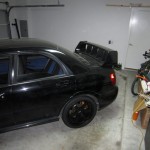
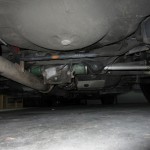

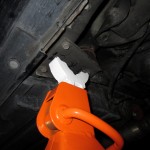
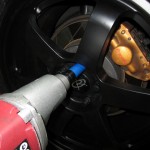
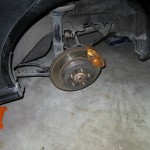
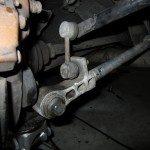

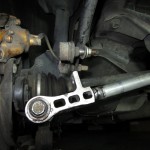

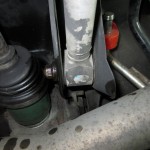

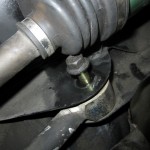
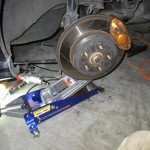






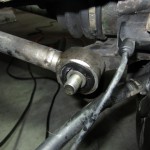

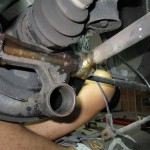
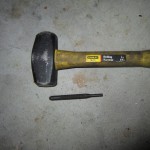
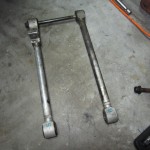

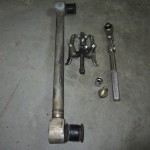


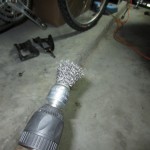
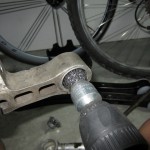




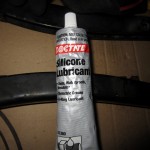
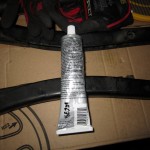
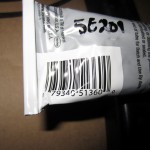
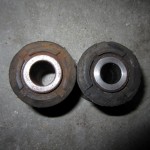
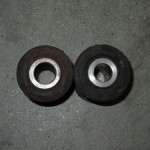
2 Comments
I want to replace the lateral link bushings on my 2001 Dodge Neon. Seems all I can find are complete assemblies. Where did you buy ONLY the bushings? I am frustrated right now. I do not have a website.
k3nxb8